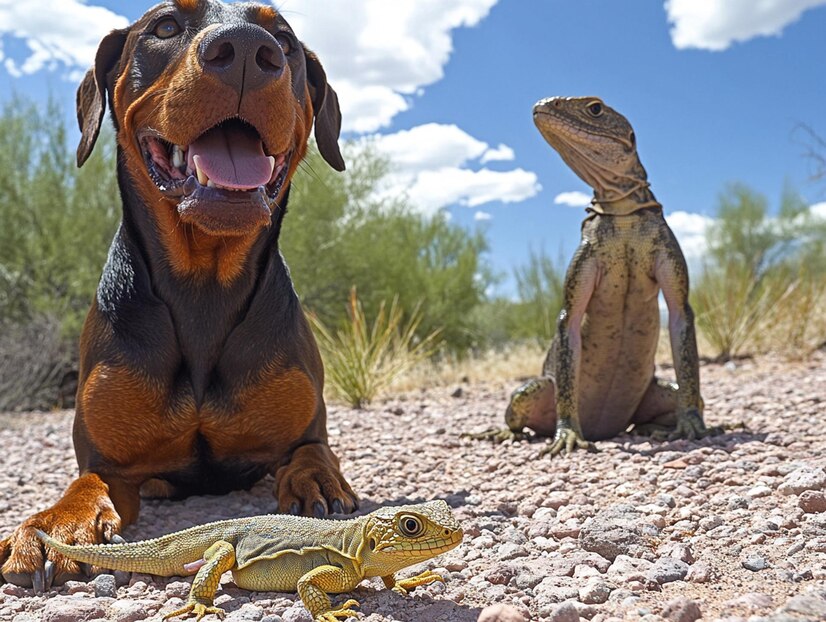Garter snakes are mildly venomous but not harmful to dogs. Their bites cause minor irritation and swelling.
Garter snakes, common in North America, are often found in backyards and gardens. These slender, non-aggressive reptiles pose minimal threat to pets, including dogs. Their mild venom is not potent enough to cause significant harm to larger animals. Most dogs experience only minor irritation or swelling if bitten.
Pet owners should still monitor their dogs for any adverse reactions. Immediate veterinary consultation ensures the best care. Understanding the risks and taking preventive measures helps keep pets safe. Regular yard inspections and supervised outdoor time can reduce encounters with these snakes.
Introduction To Garter Snakes
Garter snakes live in many places. They like grasslands, forests, and gardens. These snakes also love wet areas like ponds and streams. They often hide under rocks and logs. Gardens with lots of plants attract them.
Garter snakes are usually small. They have long, slender bodies. Their colors range from green to brown. Most have stripes along their bodies. These stripes can be yellow, white, or blue. Their scales are smooth and shiny.
Garter Snakes And Their Venom
Garter snakes have a mild venom. This venom is not harmful to humans. The venom helps them catch their prey. Dogs may have some reaction. Most reactions are mild. There could be swelling or drooling. A dog may feel pain at the bite spot. These symptoms usually go away fast.
The venom of garter snakes is more effective on small animals. Frogs and fish are common prey. The venom helps to slow them down. This makes it easier for the snake to eat them. The prey usually does not survive. The venom is not strong enough to kill bigger animals.
Potential Risks To Dogs
Dogs may show pain and swelling at the bite site. They might start drooling a lot. Some dogs could vomit or have diarrhea. Lethargy and weakness are common signs. Rapid breathing might occur. Dogs could also have dilated pupils. Tremors or muscle twitching can happen.
Most garter snake bites are mild. Severe reactions are rare but possible. Small dogs are at higher risk. Puppies may react more strongly. Watch for worsening symptoms. Seek veterinary help if needed. Some dogs may need antihistamines or other treatments. Quick action can prevent serious issues.
First Aid For Snakebites
Stay calm. Keep your dog still. This slows the spread of venom. Remove any tight collars. Swelling may occur. Clean the bite with water. Do not use ice or a tourniquet. Keep the bite lower than the heart. This helps reduce venom flow.
Seek help quickly. Call your vet immediately. Describe the snake and bite. Take a photo if safe. Follow the vet’s advice. Bring your dog to the vet. Venom can be serious. Quick action can save your dog’s life.
Preventing Snake Encounters
Keep your yard tidy to reduce snake habitats. Mow the lawn regularly and remove leaf piles. Trim bushes and shrubs to eliminate hiding spots. Install snake-proof fencing if needed. Store firewood and other debris off the ground. This makes it harder for snakes to take shelter.
Teach your dog to avoid snakes. Use commands like “leave it” or “stay away”. Reward them with treats for obeying. Train them to stay on trails during walks. Keep your dog on a leash in snake-prone areas. This minimizes the risk of encounters.
Creating A Safe Environment
Build a snake-proof fence around your yard. Make sure the fence is at least 3 feet high. Bury the fence 6 inches underground. This stops snakes from burrowing under. Use fine mesh or solid materials for the fence.
Remove tall grass and brush around your home. Snakes like to hide in these areas. Keep your lawn well-trimmed and tidy. Store firewood and debris away from the house. This reduces hiding spots for snakes.
Always supervise your dog when outside. Avoid letting them roam in tall grass or wooded areas. Use a leash to keep control of your dog. This prevents them from exploring snake-prone areas.
Provide a safe play area for your dog. Use a fenced-in yard or a designated dog park. Make sure these areas are free from snake hiding spots. This keeps your dog safe and happy while playing outside.
Common Myths About Garter Snakes
Many people believe garter snakes are highly dangerous. This is not true. Garter snakes are not poisonous to dogs. Their bite might cause mild irritation. There is no serious risk involved. They do have small amounts of venom. But it is not harmful to dogs. They use this venom to subdue small prey.
Some think garter snakes are aggressive. They are actually shy and avoid humans. They play a vital role in controlling pests. Their diet includes insects and small rodents. This helps keep your garden healthy. Garter snakes are beneficial to have around.
Garter snakes help balance the ecosystem. They are important predators of pests. This includes slugs, worms, and mice. They help reduce pest populations naturally. Encouraging their presence can be good for gardens. They contribute to a healthy environment.
Garter snakes are harmless to pets. They rarely pose any threat to dogs. Their presence indicates a healthy ecosystem. Understanding their role helps reduce fear. It encourages coexistence with these helpful reptiles.
Another Post: Can Dogs Have Skippy Peanut Butter
FAQ
Are Garter Snakes Harmful To Dogs?
Garter snakes are not harmful. Their mild venom causes minor irritation but is not dangerous to dogs.
Can A Dog Get Sick From A Garter Snake Bite?
A dog may experience minor symptoms like swelling or redness. Serious health issues are rare.
What Should I Do If My Dog Is Bitten By A Garter Snake?
Clean the bite area with soap and water. Monitor for unusual symptoms. Consult a vet if necessary.
Conclusion
Garter snakes are generally not poisonous to dogs, but caution is always wise. Monitor your dog after any snake encounter. Watch for signs of illness or distress. Consult your vet if you notice unusual behavior. Understanding local wildlife helps keep your pets safe.
Stay informed and protect your furry friends.

